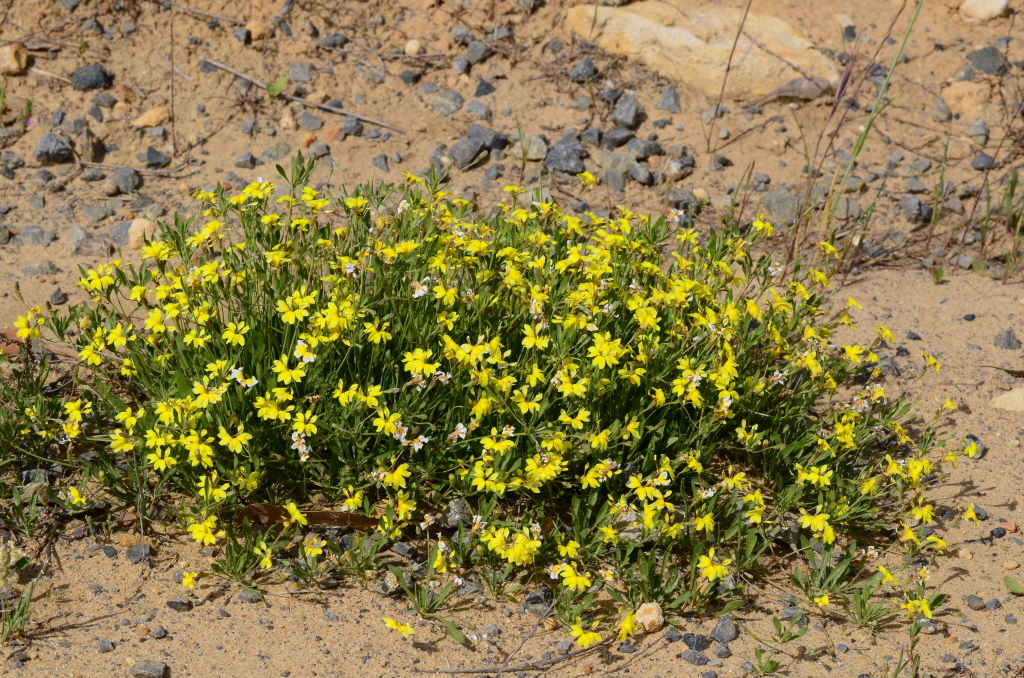Goodenia heteromera
F.Muell. Spreading GoodeniaStoloniferous perennial, or at least stolon-like stems freely produced from a central rosette, sometimes forming mats to 2 m diam.; stems to c. 20 cm long, strigose, cottony when young. Leaves shortly petiolate, rosetted, oblanceolate to obovate, 1–10 cm long, 3–10 mm wide, acute, both surfaces sparsely appressed-pubescent, margins entire or toothed; axillary hairs dense. Inflorescences subumbellate or flowers solitary in leaf-axils; peduncles 1–6 cm long, ascending, often villous at apex; pedicels articulate, to c. 3 cm long; bracteoles absent. Sepals lanceolate, 2–3 mm long; corolla 6–11 mm long, coarsely pubescent inside, yellow, abaxial lobes 4–5 mm long, wings to c. 2 mm wide; indusium oblong to squarish; ovules 20–30. Fruit ovoid, 6–7 mm long, valves entire; seeds orbicular, 1.5–2.5 mm diam., reticulate, brown, wing 0.2–0.5 mm wide. Flowers mainly Sep.–Jan. (spasmodically throughout the year).
LoM, MuM, Wim, VVP, VRiv, MSB, RobP, MuF, OtP, Gold, GGr, DunT, NIS. Also SA, Qld, NSW. Widespread but scattered in western and north-western Victoria, mostly on heavy, seasonally wet soils in riverine woodland, with disjunct occurrences in swampy grassland to the southwest of Melbourne.
The flowers are distinctive in having narrow, spreading dorsal petals that expose the indusium.
Although the lateral stems that produce fascicles of leaves at their tips appear like stolons (and are frequently described as such), they rarely, if ever, take root as true stolons do.
Jeanes, J.A. (1999). Goodeniaceae. In: Walsh, N.G.; Entwisle, T.J., Flora of Victoria Vol. 4, Cornaceae to Asteraceae, pp. 589–615. Inkata Press, Melbourne.
 Spinning
Spinning


